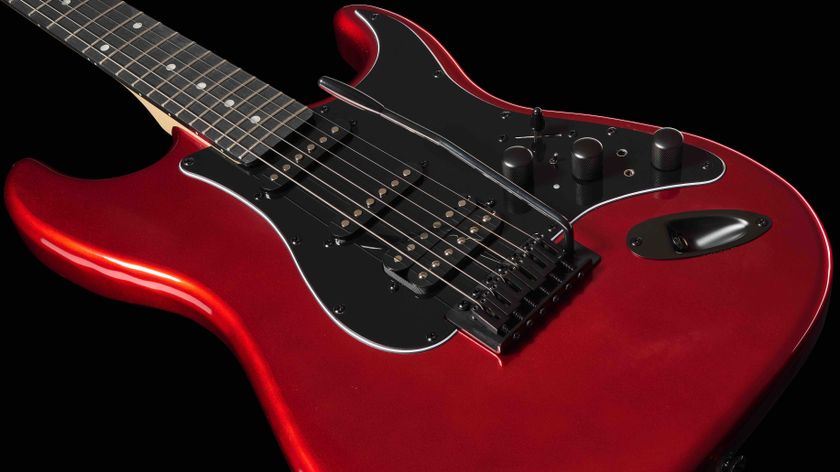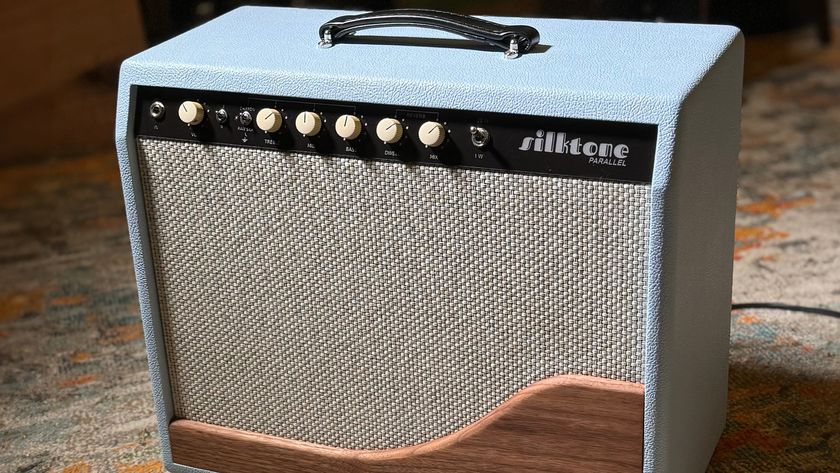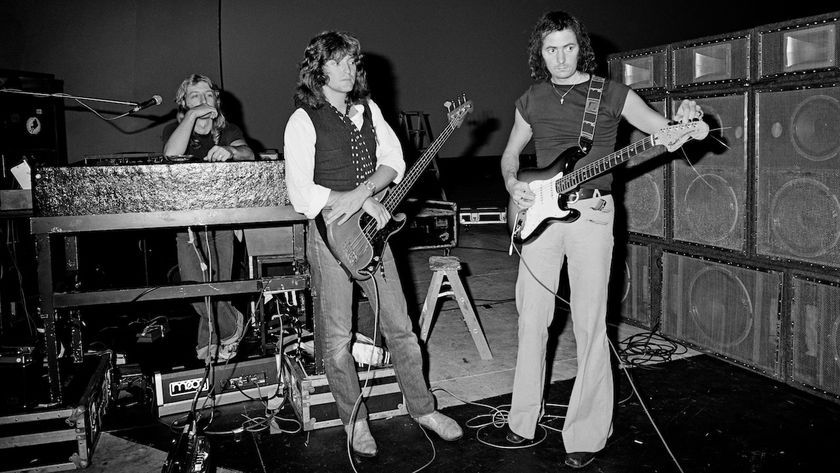Weird Science


Originally printed in Guitar World, December 2006.
The 10 Strangest Vintage Effects of All Time.
It’s probably not a coincidence that effects such as wah pedals and fuzz boxes started appearing en masse about the same time that recreational drugs like marijuana and LSD became popular with rock musicians. Indeed, it would take the mind of an incredibly stoned individual—someone deprived of exposure to the sun’s rays, fed a diet of lukewarm Mountain Dew and stale frozen pizza and kept awake for days by snorting lines of Instant Maxwell House—to even conceive of the idea for some of the music industry’s many audio oddities.
In salute to effect innovators like Electro-Harmonix’s Mike Matthews and Zachary Vex of Z.Vex (both of whom may be as straight and unpolluted as an Iowa highway, for all we know), we present to you our selections for the strangest and most wonderful guitar effects ever unleashed upon the unsuspecting public. Plugging into one of the following effects is like discovering an ancient Mayan city of gold on the tip of your fingernail while your cat pontificates, in Lebanese, about Proust. Or whacking yourself in the head really hard with a sledgehammer.
To find out more about these pedals (and hear some audio examples), check out Discofreq’s FX Site (filters. muziq.be) or Tonefrenzy.com. If you’d like to take a crack at building your own, visit DIYstompboxes.com.
LUDWIG PHASE II SYNTHESIZER
What could possibly be weirder than a guitar synthesizer pedal made in the early Seventies by a drum company? Like many so-called guitar synthesizers from this era, the Ludwig Phase II is not a synth but actually several effects, including fuzz, voltage-controlled filters and gating, combined in a box that unfolds to reveal a rocker pedal, several oversized mushroom-shaped footswitches and a control panel placed at a height only Verne Troyer would find comfortable. With a little patient tweaking, the Phase II can produce the sound of anything from alien conversations to spaceship landings—the kind of weirdness that’s made it a favorite of Sonic Youth (Washing Machine), Primus’ Larry Lalonde (Pork Soda) and Pearl Jam’s Mike McCready (Binaural).
Get The Pick Newsletter
All the latest guitar news, interviews, lessons, reviews, deals and more, direct to your inbox!
AMPEG SCRAMBLER
Ampeg is best known for its big ’n’ beefy bass amps, but the company also attempted to exploit the pedal market in a few rare instances. Ampeg’s first effort, the Scrambler, bewildered even acid casualties upon its introduction in 1969, but today’s bizarro stomp box aficionados consider it the Holy Grail. Although these pedals are rarer than Paris Hilton’s brain cells, they were built to withstand nuclear war, so units that turn up are usually in fine working condition. Its two controls (texture and balance) generate a mutated rainbow of fuzz tones ranging from metallic ring modulation with buzzing octave-up overtones to the flatulence of a 400-pound chili cook-off judge.
DEARMOND TREMOLO CONTROL
Tremolo effects aren’t particularly strange, but this early Fifties contraption, the first mass-produced external effect device for the electric guitar, earns distinction for its primitive design and clunky aesthetics. (And it was manufactured in Toledo, Ohio—isn’t that weird?) Instead of employing components like transistors, resistors and diodes to generate its on/off effect, the Tremolo Control used a motor to rock a glass tube filled with mercury (the original heavy metal) back and forth across an electrical contact to open and close the circuit. Unfortunately, mercury deteriorates over time, but Windex makes a safe alternative (and it provides “clean” tone). This effect is a favorite of Billy Gibbons, Ry Cooder and Duane Eddy.
EMS SYNTHI HI-FLI
Another so-called guitar synthesizer from the Seventies, the EMS Synthi Hi-Fli was mounted on a waist-high stand and looked like a prop from Dr. Who (EMS actually made the synths used to create sound effects for the show). Originally (and appropriately) called the Sound Freak, the Hi-Fli was essentially an early multi-effect unit that combined fuzz, octave shift, ring modulation, phasing and resonant filters to generate synthlike tones. David Gilmour used a Synthi Hi-Fli on The Dark Side of the Moon, and other fans include Steve Hackett (when he was with Genesis) and the Chemical Brothers.
MAESTRO ROVER
Someone must have spiked the water coolers at Maestro with Blue Sunshine— how else to explain sonic oddities like Maestro’s Bass Brassmaster, Filter Sample and Hold, Ring Modulator and the world’s first fuzz box? The Maestro Rover is a rotating speaker unit that not only looks like a UFO but sounds like one, too, as the speaker can rotate at exceptionally high speeds to create watery, warbling Doppler effects. A built-in crossover routes low frequencies to a guitar amp while it directs treble frequencies to the Rover’s rather low-powered internal amp, which isn’t loud enough to irk even a Ladies’ Auxiliary tea party. That’s why David Gilmour’s Rover is, uh, house trained.
ELECTRO-HARMONIX FREQUENCY ANALYZER/MAESTRO RING MODULATOR
You know those bizarre, dissonant metallic boinks on ZZ Top’s “Cheap Sunglasses” and the closing theme of South Park? That’s the sound of a ring modulator. Electro-Harmonix and Maestro unleashed this atonal beast of an effect on unsuspecting musicians during the early Seventies, and guitarists have been struggling to tame them ever since. By moving the controls while you play (the E-H Hotfoot makes a handy “third hand”), you can imitate the sounds of extraterrestrial radio transmissions, drunken calypso steel drummers and screaming robot elephants. Who hasn’t wanted their guitar to sound like that?
ROLAND FUNNY CAT
Perhaps the most appropriately named pedal of all time, the Roland Funny Cat sounds like a feline that has huffed a spray can of Rust-Oleum and downed a bottle of Jäger—and is being whipped. Kind of a fuzz/envelope-follower combination, the Funny Cat spews and mews unpredictably, with the effect often becoming more pronounced the softer, or the higher up the neck, you play. Considering how hard it was to get killer buds (an essential part of good pedal design) in Japan during the early Seventies, the Roland engineer who designed this probably smoked a lot of catnip instead.
OBERHEIM VOLTAGE CONTROLLED FILTER/MAESTRO FILTER SAMPLE AND HOLD
These pedals are identical in every way except for their paint jobs. Controls consist of knobs for range (depth) and sample-and-hold speed, and a switch that engages either the sample-and-hold-random-filter effect or an envelope follower, for autowah effects. Even with this limited feature set, the pedals can generate a surprisingly vast palette of strange but wonderful tones, ranging from juicy, drippy envelope-follower funk to guttural auto-arpeggiator stutters. Frank Zappa used one on “Ship Ahoy,” “Black Napkins” and several other songs, so if it’s weird enough for the man who wrote “Poofter’s Froth Wyoming Plans Ahead,” it’s certainly weird enough for you.
ELECTRO-HARMONIX TALKING PEDAL
While honorable mention must be made to the Heil Talk Box (which provides guitarists with a tube that they stick in their mouths to duplicate the sound of a stomach being pumped and other barfy delights), the Electro-Harmonix Talking Pedal enables your guitar to speak through purely electronic means. Actually, it only produces “A-E-I-O-U” vowel sounds, but it does give a guitar an uncanny vocallike tonality that is reminiscent of Yoda speaking Cantonese.
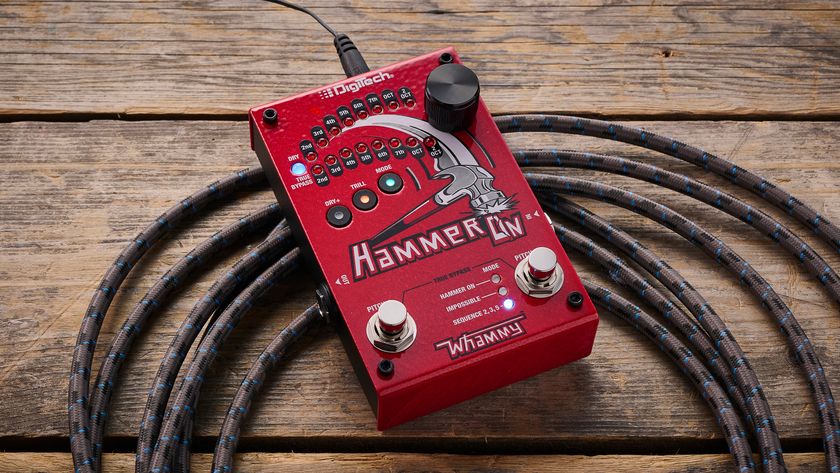
“It can make you a legato monster like Satch, give you EVH-level tapping skills, or turn your guitar into a synth sequencer”: DigiTech HammerOn review
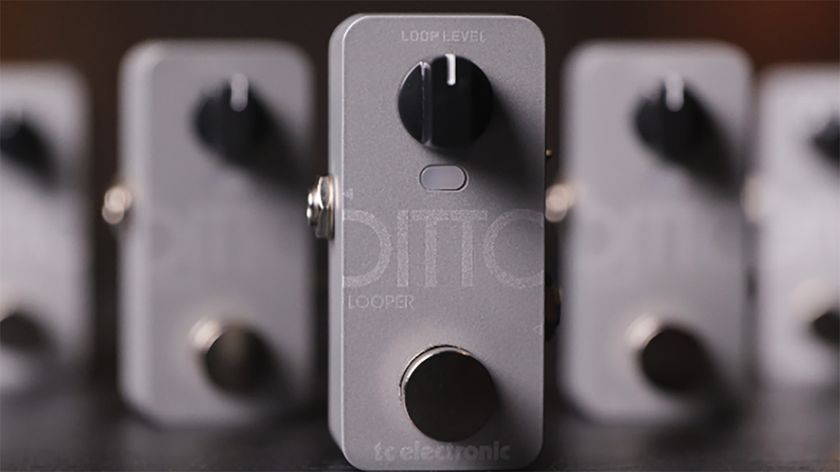
“Redefining a winning formula”: TC Electronic upgrades its beloved looper with the Ditto 2 – but can it keep up in an increasingly competitive market?
